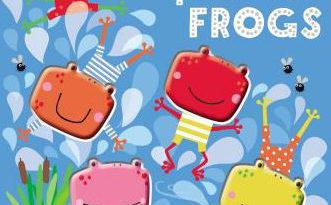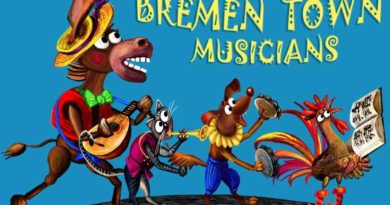Geographical, historical and cultural background of English speaking countries.
Geographical, historical and cultural background of English speaking countries. Didactic application of the most outstanding geographical, historical and cultural aspects.
Source: Free school
English Heritage
@oposiciones_ingles #UK #USA #teachersfollowteachers #learnenglish #learning #oposiciones #oposita #knowledge #stories #listening #reading
1. Introduction
• Not only linguistic, but also socio-cultural aspect to develop communicative competence.
• Order ECD/65/2015, which describes the relations between competences, content and evaluation criteria.
• Cultural and artistic manifestations.
• Source of motivation.
2 United Kingdom
• Geography (geographical features, mountains, rivers, climate population)
• History ( Britons, Celts; Romans, Germanic invasions 5tth century; 10th century Danish King Canute; 1066 William the Conqueror Norman feudal system; The Plantagenet King John signed “Magna Carta” in 1215; Parliament found in 13th century; 1455 War of roses origins The Tudor Dinasty; Henry VIII head of Protestant Church Act of Supremacy; Elizabeth I colonial expansion; 1642 civil war; 1648 Cromwell Republic; 1660 restored; 1666 Great Fire; 18th century Industrial Revolution; Queen Victoria British Empire growth. World war I, II; Irish conflict.
• Culture. Nations, flag politic organization, literature, music, education and celebrations.
3. The United States of America
• Geography. Variety of physical features and climate. Big chains of mountains, plain, rivers, climate, population.
• History. “Pilgrims Fathers” 1660 Mayflower; 13 British colonies 1776 Declaration of Independence; 1787 Constitution George Washington; Civil war North against South; World War I, II; Cold War.
• Culture. Federal Republic. Constitution based on separation of powers. Writers. Celebrations.
4. The Anglo-Saxon world in the FL class
• Important goal= knowledge of socio-cultural aspects and achievement of multicultural awareness. Accordingly, students work on traditions, songs and tales, people and customs, holidays, sports, … through contextualized activities to create a purpose and thus, motivation.
• The presence of English in our culture and technological resources facilitate this task.
• Relate the goal with the development of basic competences.
5. Conclusion
• Sociocultural competence as a fundamental element.
• Teachers will work on diverse grounds, not only linguistic, as socio-cultural is included in the official curriculum and, as we have seen, provides a source of motivation. The main purpose is to know and identify socio-cultural aspects of English speaking countries and show tolerance and respect for them. This way, we are also contributing to the development of the basic competences, not only linguistic, but Knowledge and interaction in the physical world, Social and citizen competence and cultural and artistic competence.
Our State legislation should be included here) include the knowledge of a foreign language and the development of basic communicative competence as one of the objectives to be achieved along this stage.
Due to the relevance of the sociocultural dimension in order to develop this ambitious goal (communicative competence), RD 126/14 establishes the relations amongst three essential curricular elements: content, evaluation criteria and learning standards; stating that the development of sociocultural and sociolinguistic aspects must be present if the four content blocks. Furthermore, the evaluation criteria, defined as the specific referents to evaluate students´ learning, include the sociocultural and sociolinguistic dimension, stating that learners should identify basic, specific and meaningful sociocultural and sociolinguistic aspects regarding daily life, life conditions, interpersonal relations, behaviour and social conventions, etc.
The relation between these curricular elements (competences, content and evaluation criteria) is further described in Order ECD/65/2015. In this regard, the sociocultural dimension in the teaching of a FL is closely linked to competence number 7, Cultural Awareness and Expression, which refers to the knowledge of different cultural and artistic manifestations; the skills to understand and appreciate the Spanish and Anglo-Saxon cultural heritage, its richness and diversity; and the attitudes that lead to and respect for variety of cultural expression.
Throughout this presentation we shall focus on the sociocultural aspects of English-speaking countries. Nonetheless, analyzing all the countries in which English is used as the first language would be an endless task; therefore, we shall refer to the two most outstanding and influential ones: the United Kingdom and the United States of America.
Finally, we shall define some methodological guidelines to integrate sociocultural knowledge within a practical and realistic action-based approach, analyzing how the knowledge of the English-speaking countries culture is usually a source of motivation, since students are already familiar with music, films and traditions from those countries.
2. GEOGRAPHICAL, HISTORICAL AND CULTURAL FRAMEWORK OF THE ENGLISH SPEAKING COUNTRIES
THE UNITED KINGDOM:
Geography: The largest island is Britain (Great Britain) which includes England, Wales and Scotland. The next largest island is Ireland, which is made up of Northern Ireland (Ulster) and the Irish Republic (Eire). Smaller islands, such as Anglesey, the Isle of Wight, the Orkneys, Shetlands, Hebrides and Scillies, are also part of the British political union.
Britain’s physical area covers 242,842 square kilometres. Great Britain is 955 km long and slightly less than 500 km across in its wider part. The most mountainous region is Scotland, with Britain’s highest peak: Ben Nevis (1,343 m.). Much of Wales is also mountainous where Snowdon (1,085 m.) in the Cambrian Mountains is the highest point. In England the Pennine Range (the backbone of England) extends 224 km from North to South, where the highest peak is Scafell Pike with 978 m.
Rivers in Great Britain are quite short. The longest and more important rivers are the Severn and the Thames.
Britain has a generally mild, temperate climate. The relative smallness of the country and the influence of a warm sea and westerly winds mean that there are no extreme contrasts in temperature.
The United Kingdom has few mineral resources, although natural gas and coal are their main industrial production resources.
With more than 65 million people, the United Kingdom ranks about fifteenth in the world in terms of population. The multi-racial society found in the United Kingdom has its origins in the many events that took place along the history of this great nation, as we shall now see.
History of the United Kingdom:
The first Roman invasion of these lands took place in 55 BC under the leadership of Julius Caesar. The Romans ruled Britain (Britannia) for over 200 hundred years and left behind three important things: their roads, the sites of important cities (notably London), and the seeds of Christianity. However, the Latin way of life all vanished after the Germanic invasions (Angles, Saxons and Jutes) from the 5th century onwards.
In the 9th century, the Vikings began to win wide lands of England; and in the 10th century England fell under Danish rule.
After defeating the Anglo-Saxon king Harold at the battle of Hastings in 1066, William the Conqueror introduced the Norman feudal system, and French became the language of the upper classes in Britain.
The power of the Norman Barons gradually increased, which resulted in King John being forced to sign the ‘Magna Carta’ in 1215. This document contained a long list of limitations to the king’s power and gave more prominence to Barons.
The ‘War of the Roses’ (1455-85) between the House of Lancaster and the House of York ended when Henry VII (Henry of Tudor) united the two rival houses giving origin to the Tudor dynasty.
Henry VIII used Parliament to establish himself as the head of the Protestant Church of England with the Act of Supremacy in 1534.
The reign of Elizabeth I began a period of colonial expansion. Her reign is considered by many as the Golden Age of English History.
After a short period of republic (Oliver Cromwell), the monarchy was restored in 1660.
Under Queen Ann, Scotland was united with England in 1707, and by the Act of Union their Parliaments became one.
Britain was the birthplace of the Industrial Revolution in the late 18th century.
During Queen Victoria, the British Empire grew to a great extent. Queen Victoria’s death (1901) coincided with the decline of the British Empire as a world power.
The United Kingdom entered World War I allied with France and Russia in 1914, and World War II in 1939, where they battled against German and Japanese armies.
British culture:
The United Kingdom consists of four nations: England, Wales, Scotland and Northern Ireland, each with its own special character.
The national flag of the United Kingdom is the ‘Union Jack’, in which we can find the crosses of St. George (England), St. Andrew (Scotland), and St. Patrick (Ireland). It is part of the flags of some Commonwealth nations such as Australia, New Zealand, etc.
The United Kingdom is a constitutional monarchy and a parliamentary democracy. Its constitution is partly unwritten and flexible; and establishes the separation of powers between the Executive (the Government), the Legislative (the two Houses of Parliament: ‘House of Lords’ and ‘House of Commons’), and the Judiciary (the Courts).
The British are a great nation of readers. There are 12 national daily newspapers and 11 national Sunday ones; on the other hand, English literature is spread around the world thanks to its great writers such as Shakespeare, Lord Byron, Oscar Wilde, James Joyce, Charles Dickens, Kipling, etc.
Most of rock music groups from the British Isles are known around the world. An example of these manifestations was the case of “The Beatles” that created a new life style.
Apart from Christmas and Easter, some of the most important celebrations in Britain are “Halloween” on October 31st, “Guy Fawkes’ Night” on November 5th, among others.
THE UNITED STATES OF AMERICA:
Geography: The United States of America is a federal republic of 50 states, 48 contiguous states and the other two states are Alaska and Hawaii. It is the 3rd largest country in the world. The country presents a tremendous variety in physical features and climate due to this wide distribution.
The USA may be divided into seven broad geographical regions: from east to west, the Atlantic-Gulf coastal plain; the Appalachian Highlands; the Interior Plains; the Interior Highlands; the Rocky Mountains system; the Intermontane Region; and the Pacific Mountain system.
The USA has an extensive inland water system. The Mississippi-Missouri river is the longest in the United States and the second longest in the world.
The United States has a broad range of climates, varying from the tropical rainforest of Hawaii and the tropical of Florida to the subarctic and tundra climates of Alaska.
The United States, with more than 325 million inhabitants, is the 3rd country in the world in terms of population.
History of the United States of America: In 1620 the “Pilgrim Fathers” arrived at Plymouth on the ship Mayflower. When Britain asked the colonists to pay of taxes, the War of Revolution burst in 1775. Traditionally, it is considered that the history of the USA starts with the Declaration of Independence (1776). In 1789, the Constitution became the basis for the USA government, with war hero George Washington as the first president.
Under the new constitution, the issue of slavery was intensifying strains between the rapidly industrializing North against the plantation South. When slavery was forbidden by Abraham Lincoln, the Civil War divided the country.
After the war, the States were characterized by increasing industrialization, the continuing westward movement, a massive influx of foreign immigrants, and the slow emergence of the United States into a position of world power.
In the latter part of the 19th century, an economy based on oil, steel, railroads and machines led the USA to be the first economy in the world.
The USA did not remain outside the World War I, and its entry was decisive for the Allied Victory.
After the Great Depression (1929) which reached worldwide proportions; the dramatic situation in Europe (fall of France in 1940 under the German offensive) made the USA to overtly support the Allies. However, it would be in 1941 that the USA entered in war after a surprise attack by the Japanese navy in Pearl Harbour.
The Allied Victory (1945) made the USA become the leader of the western world, which caused the long Cold War with the Soviet Union. This Cold War that divided the world into two blocks was the cause of American intervention in Korea (1950-53) and Vietnam (1961-73), which produced a deep moral crisis in the American society.
The end of the Cold War, precipitated by the dissolution of the Warsaw Pact and the collapse of the Soviet communism, resulted in reduction of armed forces and the opening of new markets in an increasingly global economy.
American Culture: The American flag is often known as the “Old Glory” or “Stars and Stripes”.
The United States is a federal republic composed of a national government and 50 state governments. The country’s Constitution delegates certain powers to the national government and reserves all other powers to the states. This constitution is based on the doctrine of the separation of powers between the Executive, Legislative and Judiciary.
The USA has given many good writers to the world such as Mark Twain, Washington Irving, Edgar Allan Poe, H. Melville, Ernest Hemingway, William Faulkner and so on.
There are some national holidays that are celebrated in every state, such as Independence Day (4th July), Labour Day (1st Monday of September), Halloween (31st October), Thanksgiving Day (4th Thursday of November), among others.
We may realize that different aspects from the American way of life have clearly impinged our society, thus, more and more people eat fast food, watch American movies or cartoons, and are familiarized with events such as the Super-Bowl, the Oscar Awards, and the like.
The sociocultural knowledge of English speaking countries must be a weighty component in the FL curriculum since the development of sociocultural competence contributes to favour communicative competence. According to Celce-Murcia (2007), “sociocultural competence refers to the speaker´s pragmatic knowledge, including knowledge of language variation with reference to sociocultural norms of the target language”.
As we shall see in the next point, there are plenty of pedagogical reasons and didactic applications stemming from the inclusion of sociocultural aspects in FLT.
More information:
www.oposicionesingles.com
blog.oposicionesingles.com
facebook.com/OposicionesInglesRP/
Twitter: @OposIngles
https://twitter.com/OposIngles
Instagram: https://www.instagram.com/oposiciones_ingles




